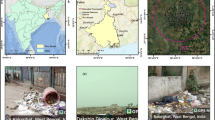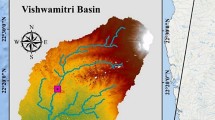Abstract
This paper proposes an approach for defining the criteria set required for multicriteria decision making. An approach is developed for a specific class of water management problems, and a SWOT/PESTLE analysis is recommended for identifying the internal and external factors that influence a given water system. The factors are grouped into six categories: political, economic/financial, social, technical, legal, and environmental (PESTLE), and separated afterwards according to their positive or negative influence on the system. All factors are filtered by a proposed elimination algorithm to identify the non-inferior factors and declare them as candidates for inclusion into the criteria set. An approach is applied to the real-life problem of how to define the criteria set and enable the selection of the optimal reconstruction solution of a water intake structure within a regional hydro-system in Vojvodina Province, Serbia. To verify the developed approach, an independent expert is invited to asses all factors identified by the SWOT/PESTLE analysis using the analytic hierarchy process (AHP) and to rank factors by order of preference. The outcome is satisfactory because the seven top-ranked factors from AHP completely matched the list of factors derived from the elimination algorithm.






Similar content being viewed by others
References
Bajcetic M (2008) Water management economy in public—private partnership. Prometej, Novi Sad
Bastiaanssen WGM, Allen RG, Droogers P, D’Urso G, Steduto P (2007) Twenty-five years modeling irrigated and drained soils: state of the art. Agric Water Manag 92:111–125
Doummar J, Massoud MA, Khoury R, Khawlie M (2009) Optimal water resources management: case of Lower Litani River, Lebanon. Water Resour Manag 23:2343–2360
Grigg NS (2005) Institutional analysis of infrastructure problems: case study of water quality in distribution systems. J Manag Eng 21:152–158
Hill T, Westbrook R (1997) SWOT analysis: it’s time for a product recall. Long Range Plan 30:46–52
Kurttila M, Pesonen M, Kangas J, Kajanus M (2000) Utilizing the analytic hierarchy process_AHP.in SWOT analysis—a hybrid method and its application to a forest-certification case. For Policy Econ 1:41–52
Menon A, Bharadwaj SG, Adidam PT, Edison SW (1999) Antecedents and consequences of marketing strategy making. J Mark 63:18–40
Molden D, Oweis TY (2007) Pathways for increasing agricultural water productivity. In: Molden D (ed) Water for food, water for life, a comprehensive assessment of water management in agriculture. Earthscan, London, pp 279–314
Mugabi J, Kayaga S, Njiru C (2007) Strategic planning for water utilities in developing countries. Util Policy 15:1–8
Mylopoulos Y, Kolokytha E, Kampragou E, Vagiona D (2008) A combined methodology for transboundary river basin management in Europe. Application in the Nestos–Mesta catchment area. Water Resour Manag 22:1101–1111
Rijsberman FR (2006) Water scarcity: fact or fiction. Agric Water Manag 80:5–22
Saaty TL (1980) The analytic hierarchy process. McGraw-Hill, New York
Shannon CE, Weaver W (1947) The mathematical theory of communication. The University of Illinois Press, Urbana
Sunje A, Causevic E, Ahmetspahic E, Cero E, Hodzic S (2010) Development strategy of Zenica–Doboj Canton for period 2010–2020, Forma, Zenica, Bosna i Hercegovina (in Bosnian)
Vorthman RG Jr (2008) Toward best-practices program management. Sigma 8. Noblis, Falls Church
Wasimi SA (2010) Planning for a large dam project: the case of Traveston Crossing dam. Water Resour Manag 24:2991–3015
Acknowledgements
This work was supported in part by Serbian Ministry of Education and Science and Provincial Secretariat for Science and Technological Development of Vojvodina Province.
Author information
Authors and Affiliations
Corresponding author
Rights and permissions
About this article
Cite this article
Srdjevic, Z., Bajcetic, R. & Srdjevic, B. Identifying the Criteria Set for Multicriteria Decision Making Based on SWOT/PESTLE Analysis: A Case Study of Reconstructing A Water Intake Structure. Water Resour Manage 26, 3379–3393 (2012). https://doi.org/10.1007/s11269-012-0077-2
Received:
Accepted:
Published:
Issue Date:
DOI: https://doi.org/10.1007/s11269-012-0077-2




